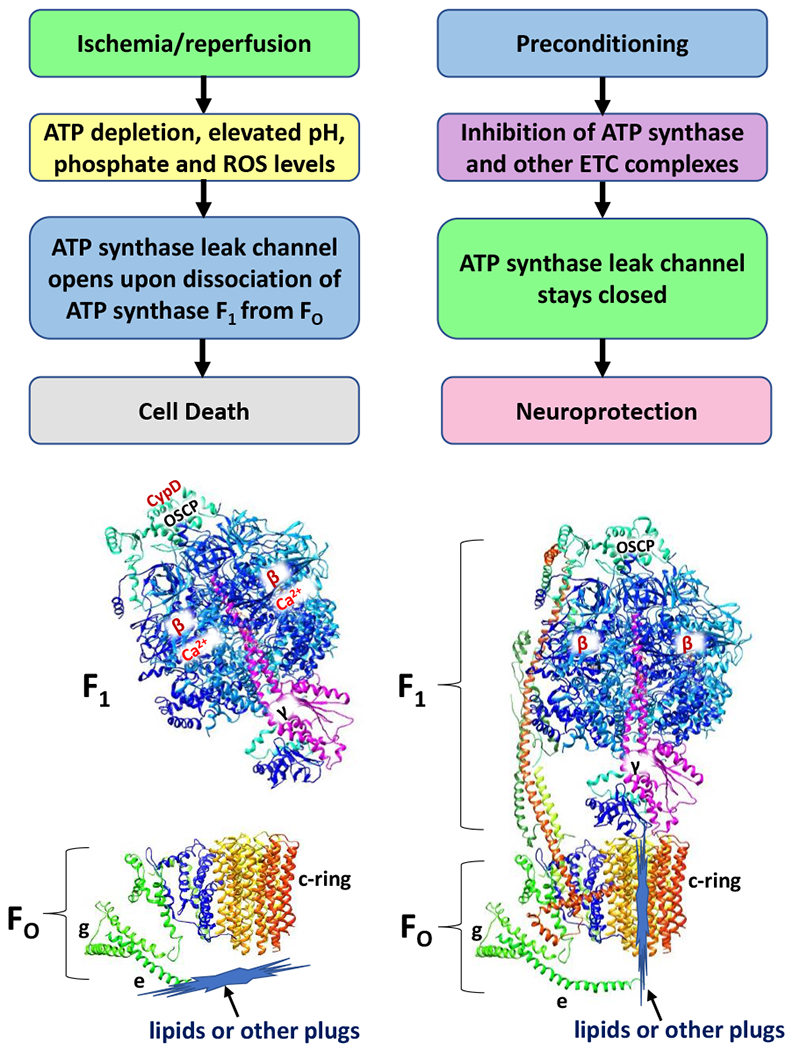Figure 3.

ATP depletion, elevated pH, phosphate, and ROS levels after ischemia/reperfusion injury trigger the opening of the mPTP and induce cell death. The opening of ACLC occurs upon non-reversible dissociation of F1 subcomplex from FO (Alavian et al., 2014), due to the binding of Ca2+ to ATP synthase β subunits, CypD to OSCP and upon removal of lipid or other plugs from the c-subunit lumen. The ischemic preconditioning, stimulated by the inhibitors of ATP synthase and of other mitochondrial electron transport chain complexes prevent the opening of ACLC and thus increase the brain’s tolerance against ischemic cell death, highlighting the role of mPTP as a promising target for neuro and cardioprotection during I/R injury. ATP synthase subunits are drawn as ribbon representations (modified PDB ID code: 6J5I) (Gu et al., 2019).
